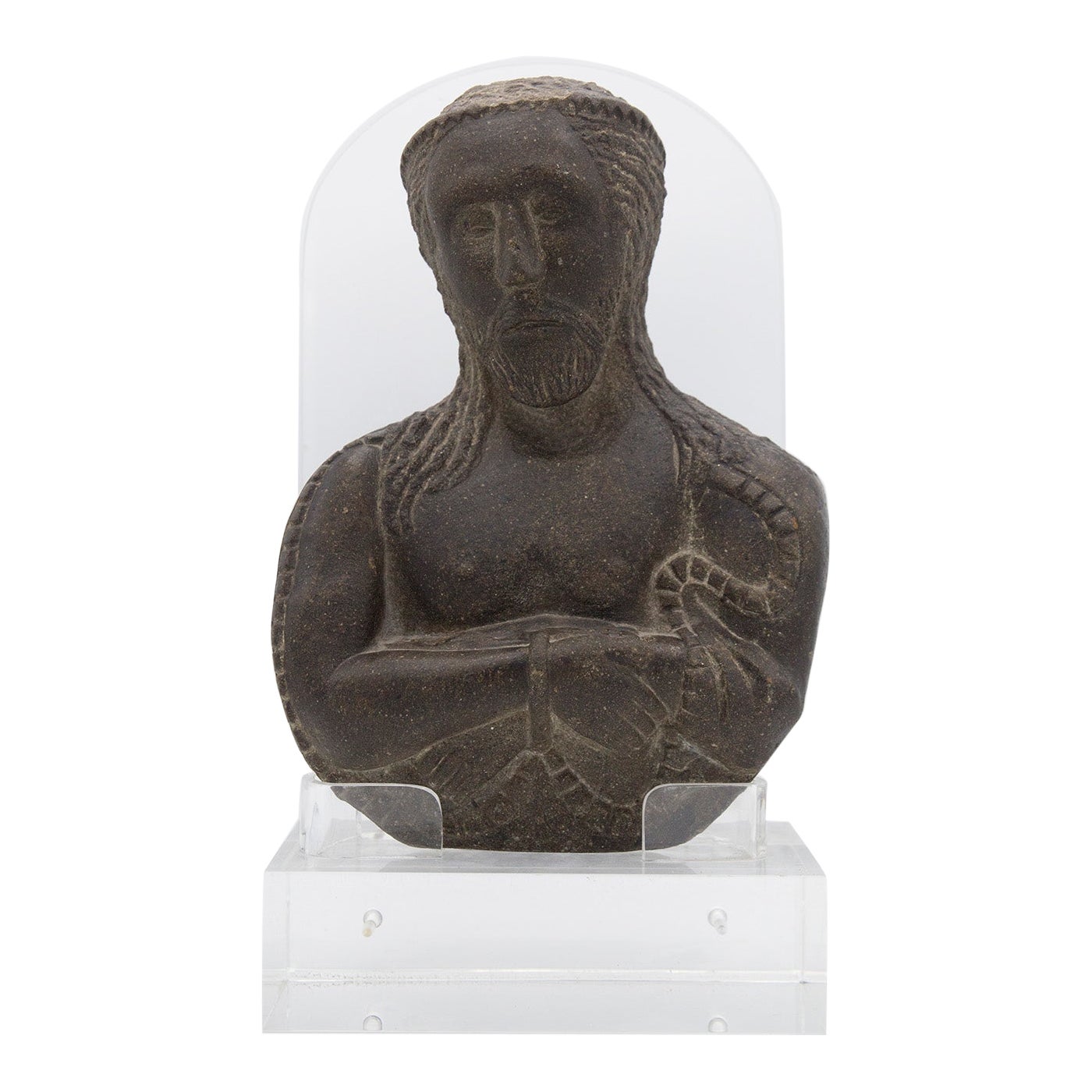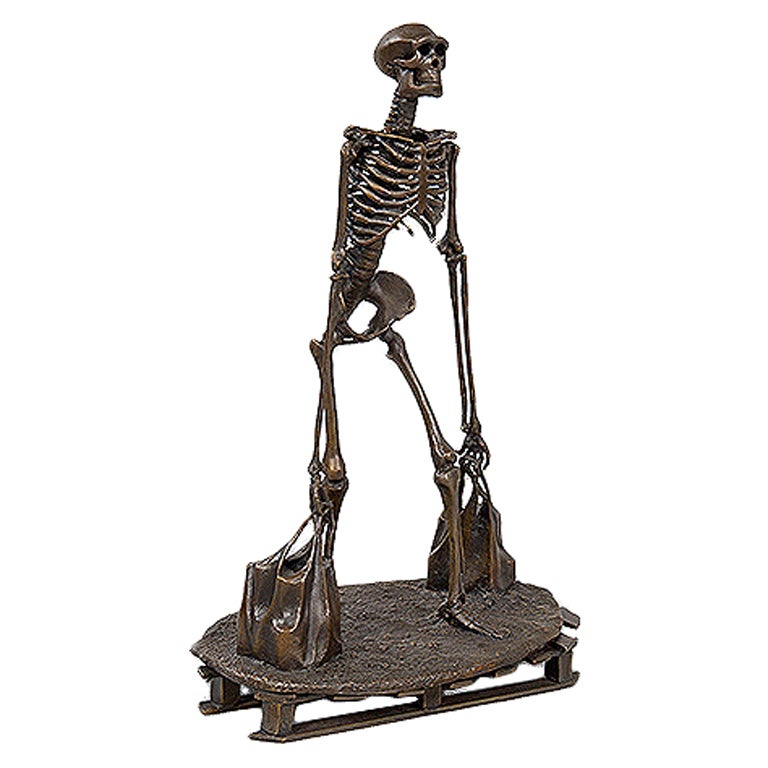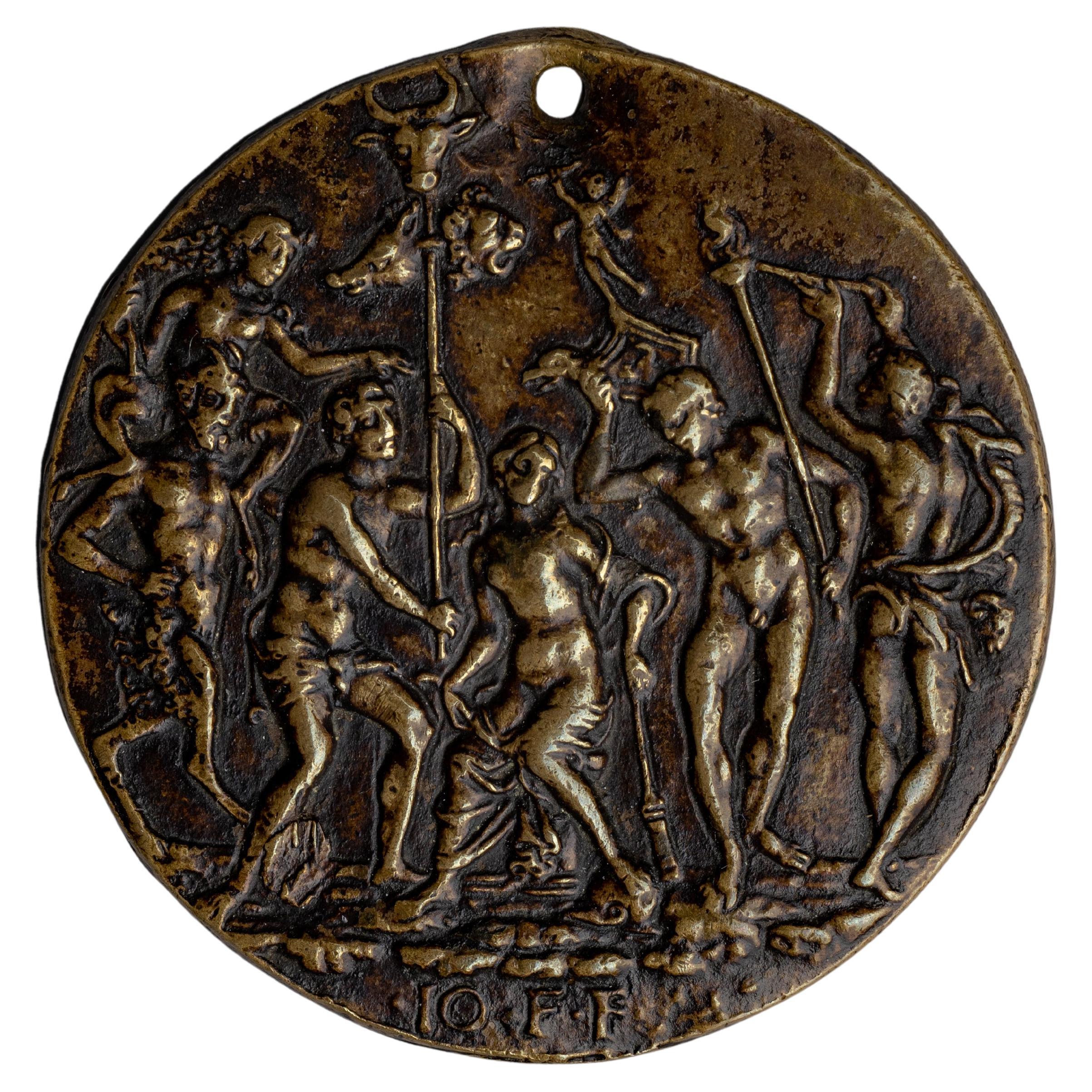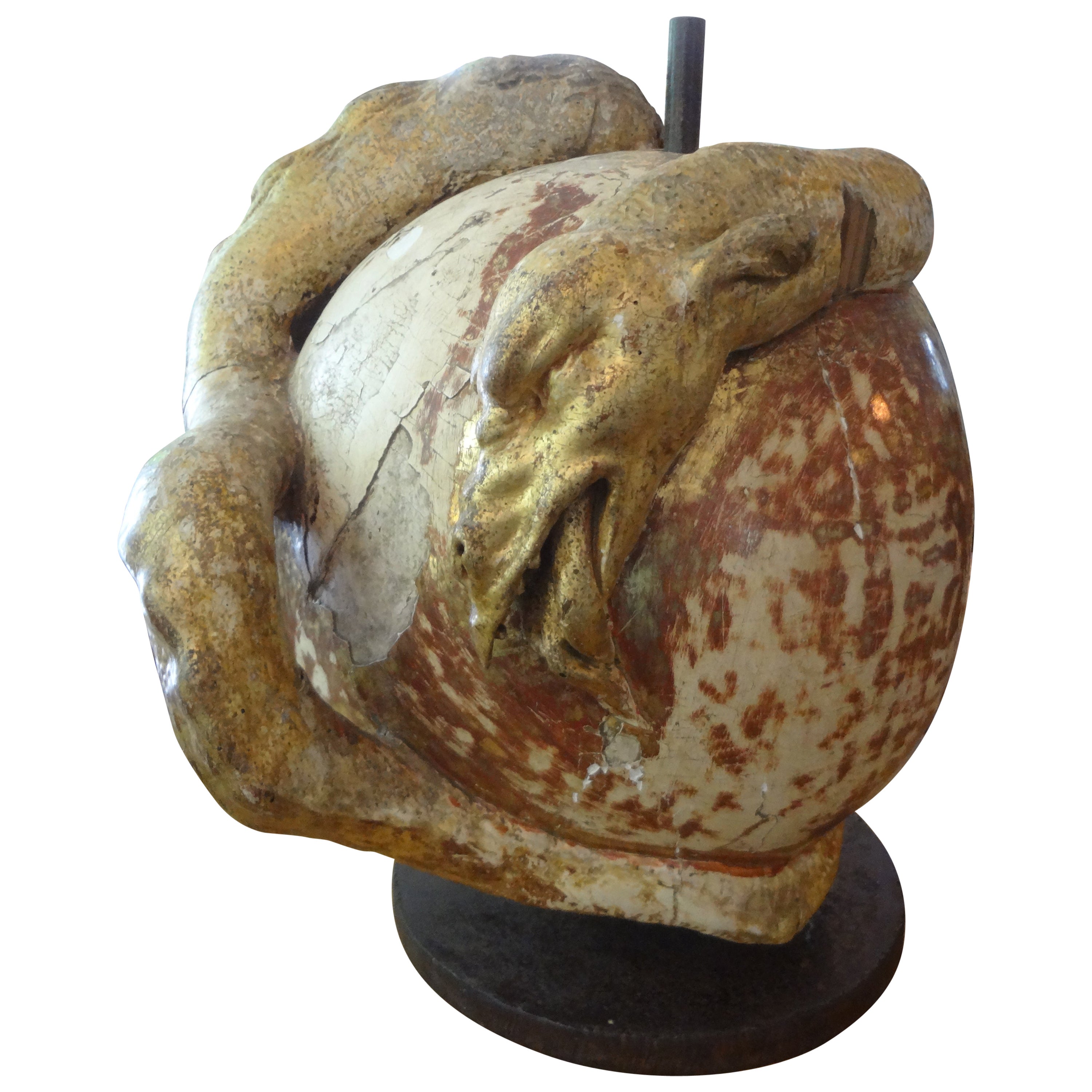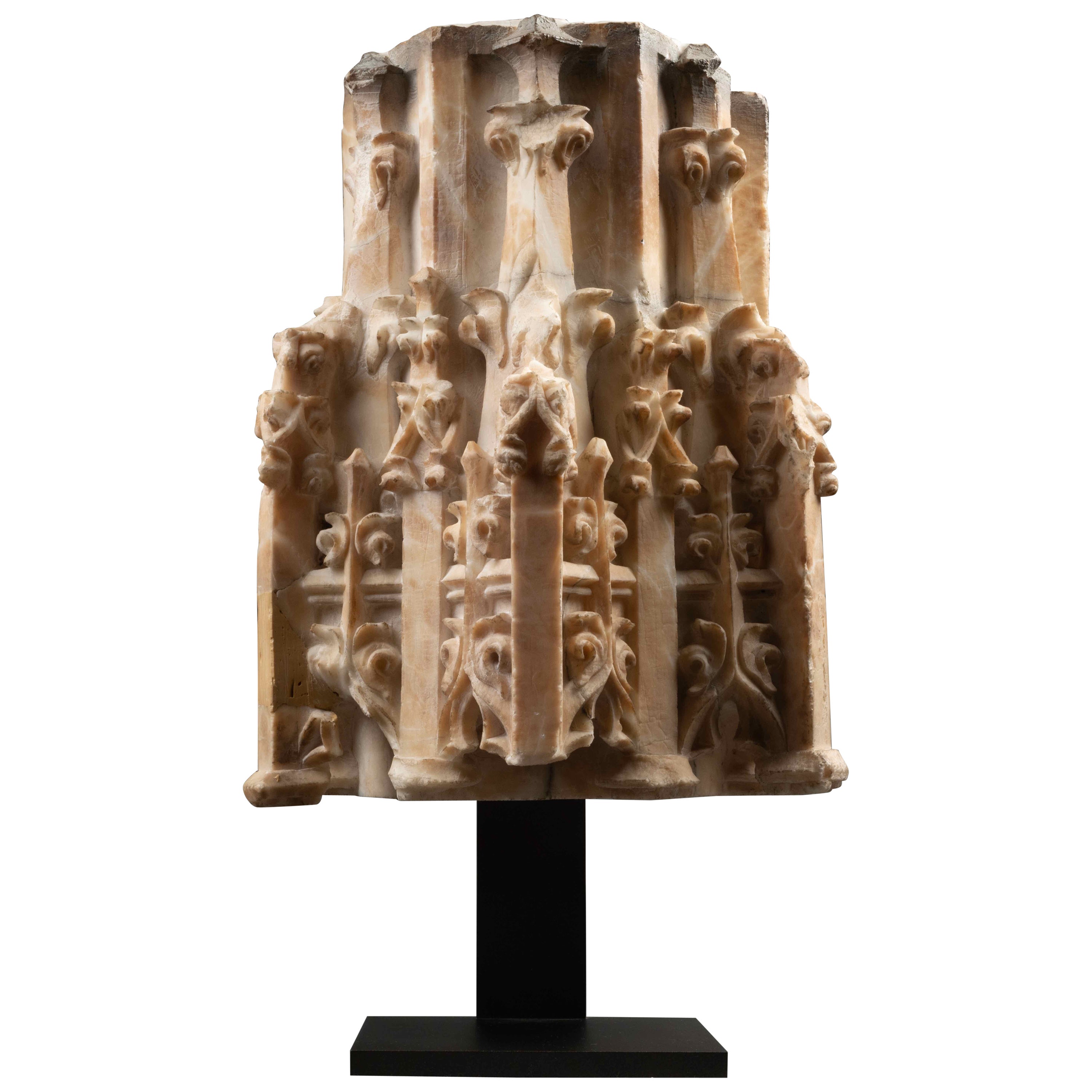Items Similar to Ecce Homo - Florence, 15th century
Want more images or videos?
Request additional images or videos from the seller
1 of 5
Ecce Homo - Florence, 15th century
About the Item
A terracotta bust "Ecce Homo"
Florence, 15th century
53 x 44 x 31 cm
- Dimensions:Height: 20.87 in (53 cm)Width: 17.33 in (44 cm)Depth: 3.15 in (8 cm)
- Style:Renaissance (Of the Period)
- Materials and Techniques:
- Place of Origin:
- Period:
- Date of Manufacture:15th century
- Condition:Wear consistent with age and use.
- Seller Location:Bruxelles, BE
- Reference Number:1stDibs: LU6666236527722
About the Seller
5.0
Vetted Seller
These experienced sellers undergo a comprehensive evaluation by our team of in-house experts.
1stDibs seller since 2022
6 sales on 1stDibs
Typical response time: 7 hours
- ShippingRetrieving quote...Ships From: Bruxelles, Belgium
- Return PolicyA return for this item may be initiated within 3 days of delivery.
More From This SellerView All
- Gothic Canopy, France, 15th CenturyLocated in Bruxelles, BEGothic canopy France, 15th century Alabaster, some traces of polychromy 33 x 23 x 20 cm Provenance: - Private collection Genève, Switzerland ...Category
Antique 15th Century and Earlier French Gothic Figurative Sculptures
MaterialsAlabaster
- Terracotta Bust of Christ as the Redeemer, 15th CenturyLocated in Bruxelles, BEA terracotta bust of Christ as The Redeemer Tuscany or Emilia Romagna, late 15th century Measures: 46 x 43 x 21 cm This powerful, moving bust of...Category
Antique 15th Century and Earlier Italian Renaissance Figurative Sculptures
MaterialsTerracotta
- Gothic Stone Fragment Representing Vine Leaves, France, 15th CenturyLocated in Bruxelles, BEGothic architectural fragment representing vine leaves France, 15th century Sandstone H 21 x 21 x 17 cm mounted on a modern metal pe...Category
Antique 15th Century and Earlier French Gothic Architectural Elements
MaterialsLimestone
- Large Hexagonale Base of Pilaster in Burgundy Stone, Burgundy, 15th CenturyLocated in Bruxelles, BELarge base of molded hexagonal pilaster in burgundy stone carved with vines, grapes and rosettes in high relief. Burgundy, 15th century 28 x 63 x 30 cm Provenance : collection De...Category
Antique 15th Century and Earlier French Gothic Architectural Elements
MaterialsStone
- Embriachi workshop marquetry casket - Northern Italy, 15th centuryLocated in Bruxelles, BEEmbriachi workshop marquetry casket Northern Italy, 15th century Alla certosina inlays (bone, stained bone, pewter and wood) H 28.2 x W 18 x D 14 cm This beautiful casket of rectangular form is richly decorated with the characteristic geometric patterns of the Embriachi style. The intricate geometric patterns are fashioned by juxtaposing lighter and darker pieces of wood, (colored) bone, horn and pewter. The lid and base are framed by a broad band of horn. When ivory became scarce in Europe due to disrupted trade routes, bone was substituted. The attention to Symmetry and balance created an harmonious visual effect Enhancing the overall aesthetic appeal of the casket. The application of geometrical motifs is in Italy known as marquetry ‘alla Certosina’, named after the Certosina Church in Pavia with its famous altarpiece decorated in this way. This is ‘intarsia technique’, a term derived from the Arabic 'tarsi', which means ‘incrustation' recalling ancient mosaics made from various materials. These geometric elements not only enhance the aesthetic appeal of the caskets but also demonstrate the versatility and skill of the artisans in creating multifaceted works of art. ‘Alla Certosina’ became famous through the Northern Italian Embriachi family who achieved a particularly high standard in working in this technique. Venice in particular was known for the production of these luxurious boxes. The caskets, hexagonal or rectangular, surmounted by a lid decorated in several registers constitute the secular, albeit equally renowned component of the workshop’s production, in addition to mirror frames and various everyday objects. The method of fabrication of those objects was based on two concepts that underlay pre-industrial production: standardization and modularity, thanks to a distribution of skills according to the different phases of fabrication. even the realization of the marquetry motifs (in the form of ingots from which portions of the desired size were cut) were therefore entrusted to various specialized craftsmen, as were the assembly phase. Today better known thanks to the extensive research work recently carried out by Michele Tomasi, this workshop owes its name to its founder and owner, the Florentine Baldassare Ubriachi (or degli Embriachi), a merchant and banker established in the Tuscan capital before he settled in Venice in 1395. Together with sculptor Giovanni di Jacopo, who directed the workshop, from the last years of the fourteenth century, Baldassare oversaw a production that was truly original, and still easily recognizable today, comprising monumental altarpieces and various objects, primarily triptychs and caskets. The precise location of the workshop is unknown, except that it originated in Florence and in ca. 1431 there was apparently a workshop in Venice, in the area of S Luca. They employed local workers specializing in 'certosina' (inlay of stained woods, bone and horn), and the workshop produced items carved in bone (usually horse or ox) with wood and bone marquetry. The geometric decoration of Embriachi caskets reflects the artistic complexity and attention to detail that characterized their work. this inlaid casket is a testament to the skill and artistry of the Embriachi family and serves as a stunning example of the decorative arts of the late Middle Ages. Related Literature : E. Berger, Prunk-Kassetten: Europäischen Meisterwerke aus acht Jahrhunderten / Ornamental Caskets...Category
Antique 15th Century and Earlier Italian Renaissance Decorative Boxes
MaterialsPewter
- Attributed to Domenico di Paris - Madonna and The Child, 15th centuryLocated in Bruxelles, BEAttributed to Domenico di Paris, also called Domenico del Cavallo ( Monselice, documented in Ferrara between 1442 and 1501) Madonna and The Child Polychromed and gilded Stucco 47,5 ...Category
Antique 15th Century and Earlier Italian Renaissance Wall-mounted Sculpt...
MaterialsStucco
You May Also Like
- Ecce Homo. Sculptor active in Lombardy, mid-16th centuryBy Non-Standard Furniture and LightingLocated in Milano, ITWooden sculpture depicting Ecce Homo. Christ, whose figure is cut off at thigh level, is standing, arms crossed at waist level. Long ringlets frame a face with a pointed beard, a hal...Category
Antique 16th Century Italian Other Figurative Sculptures
MaterialsWood
- Antique "Ecce Homo" in Carved StoneLocated in Milano, ITWonderful carved stone sculpture depicting Christ, modeled by a master sculptor in the 15th century, carved entirely by hand. This sculpture is known as Ecce homo. As tradition tell...Category
Antique 15th Century and Earlier Italian Mid-Century Modern Busts
MaterialsStone
- "Ecce Homo Tesco" Sculpture, England, 2011By Shaun Doyle & Mally MallinsonLocated in London, GB"Ecce Homo Tesco" sculpture, England, 2011. Edition 3/9 by Shaun Doyle & Mally Mallinson, signed "Mally Doyle" We aren’t going to be drawn into a discussion a...Category
21st Century and Contemporary English Sculptures
MaterialsBronze
- 15th Century Italian Renaissance Bronze MedallionLocated in Fort Lauderdale, FLRenaissance bronze medallion made by Master IOFF in the mid 15th century, showing the mythological scene of Ariadne on Naxos. Made in the mid-15th ...Category
Antique 15th Century and Earlier Italian Renaissance Mounted Objects
MaterialsBronze
- 15th Century Italian Renaissance Giltwood CarvingLocated in Houston, TX15th Century Italian Renaissance Giltwood Carving . This magnificent 15th century Italian Renaissance gilt wood carving with a serpent is displayed on a revolving iron base. This mou...Category
Antique 15th Century and Earlier Italian Renaissance Mounted Objects
MaterialsIron
- 15th Century Gothic VirginLocated in Madrid, ES15th century Gothic Virgin Gothic Virgin of the 15th century Virgin in carved and polychrome wood of the 15th century. In its original state, muse...Category
Antique 15th Century and Earlier Figurative Sculptures
MaterialsWood
Recently Viewed
View AllMore Ways To Browse
Italian Renaissance Terracotta Busts
Men Naked Statue
Peynot Sculpture
Gunnar Nylund Shell
Antique White Figurines Bisque
George Northup
Triart Bassano
Vintage Plaster Roman Head 1970s
Carved Modern Wood Head
Figural Sculptures With Ivory
Vert De Patricia Marble
Consuls Empire
Bronze Plaster
Thin Marble Sculpture
Hand Carved Wood Sculptures People
Art Nouveau Bronze Lady
Thai Carved Statue
Devotional Vintage

